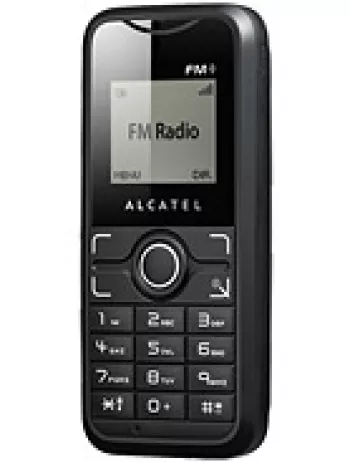
Network
The Alcatel Lollipops operates on the GSM network, which was a standard at the time of its announcement. Supporting GSM 900 and 1800 bands, it allowed users to connect to the mobile network with a relatively wide area of coverage. However, it lacked support for the EDGE technology, which limited data transmission speeds.
Launch
The Alcatel Lollipops was announced in February 2007. Despite the anticipation surrounding its release, the device was later cancelled, which resulted in it never reaching the consumer market. This cancellation left many potential users without the opportunity to experience what could have been an intriguing entry in Alcatel's lineup.
Body
With a compact dimension of 88 x 45.5 x 21 mm and weighing in at 84 grams, the Alcatel Lollipops was designed to be a portable and lightweight device. It used Mini-SIM technology, which was common at the time, allowing for easier compatibility with mobile networks.
Display
The device features a CSTN display supporting 65K colors. Measuring 1.8 inches, the screen had a resolution of 128 x 160 pixels, resulting in a pixel density of approximately 114 pixels per inch. The display accounted for only about 25.5% of the screen-to-body ratio, emphasizing that the phone was not aimed at multimedia-heavy users.
Memory
Internal memory was limited to 4MB with no option for external expandable storage via card slots. The phonebook could hold up to 500 entries, and the device also maintained call records for the last 20 dialed, received, and missed calls. This setup was quite restrictive by today's standards, emphasizing the phone's positioning as a basic communication device.
Main Camera
The Alcatel Lollipops included a VGA camera. While it offered very basic photo-taking capabilities, it did not support video recording. The VGA standard was common among feature phones from that era where advanced photography was not a central focus.
Sound
Sound features were minimal with no loudspeaker or 3.5mm audio jack, limiting how audio content could be played or listened to using the device. For alerts, it supported vibration and polyphonic ringtones.
Communications
On the communications front, the Alcatel Lollipops did not feature contemporary technologies such as WLAN or Bluetooth, limiting wireless connectivity options. Additionally, there was no GPS positioning or built-in radio function, making the phone quite a basic choice for users looking for simple functionality.
Features
Despite its limitations, the device included some noteworthy features for the time, like the capability to send SMS messages and use a WAP 2.0 browser for basic web browsing. There were also two pre-installed games, with support for Java MIDP 2.0, allowing for some level of customization through Java-based applications.
Battery
The phone came with a removable Li-Ion 650 mAh battery, which provided a decent battery life for a feature phone. The expected stand-by time was up to 320 hours, with a talk time of up to 6 hours and 45 minutes, making it reliable for users who needed long-lasting battery performance without frequent recharges.
Miscellaneous
The color scheme for the phone featured a glossy white finish with pink logos, aiming to appeal to a fashionable demographic looking for a stylish device.
In conclusion, the Alcatel Lollipops was intended to be a simplistic, user-friendly feature phone that offered basic telephony functions with a few added extras. However, its cancellation meant it never made it to the market, leaving potential users to speculate on its potential success. Its design and feature set reflect the trends and limitations of the mid-2000s mobile landscape, providing insight into the era’s technological mindset.
Main Features of Alcatel Lollipops
- Compact dimensions (88 x 45.5 x 21 mm) for easy portability.
- Lightweight design, weighing only 84 grams.
- GSM technology support for basic mobile connectivity.
- Colorful CSTN display with 65K colors for vibrant visuals.
- Phonebook allows storage of up to 500 entries for contact management.
- Messaging support with SMS.
- Java support (MIDP 2.0) for additional mobile applications and games.
- Removable Li-Ion 650 mAh battery, providing up to 320 hours of standby time and up to 6 hours and 45 minutes of talk time.
- Unique design available in Glossy White with pink logos.
Alcatel Lollipops Device Drawbacks
- 2G only technology with no 3G or 4G support
- EDGE technology not available
- Cancelled launch, never made it to the market
- Small display size with limited resolution
- No expansion with a memory card slot
- Limited internal memory of 4MB
- No video recording capability on the main camera
- Absence of a selfie camera
- No loudspeaker available
- Missing 3.5mm audio jack for headphones
- No wireless connectivity options such as WLAN or Bluetooth
- Lack of positioning services (GPS)
- No FM Radio support
- No USB connectivity
- Very basic messaging support with only SMS

View Also
More Phones
All Rights Reserved +14268 Phones © Mobilawy 2025

























